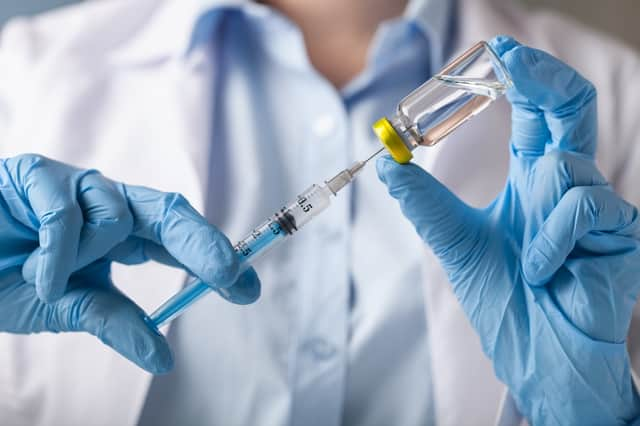This is everything you need to know about the new ebola vaccine


The Democratic Republic of Congo is currently in the midst of its worst Ebola outbreak, and plans to introduce a second, new vaccine to combat the virus is being met with debate.
With health experts stating that the new vaccine is safe, why are plans for its introduction being met with so much push back?
The controversy
Advertisement
Hide AdAdvertisement
Hide AdThere are fears that the people of the Democratic Republic of Congo would be used as guinea pigs, as the new vaccine has not been tested on people with the Ebola virus. It has, however, proven highly effective in its tests on primates, which are genetically close to humans.
Experts say it is not safe to trial the vaccine on volunteers infected with the virus in a clinical trial, which means that the only real way to test the vaccine on humans is for it to be deployed in an outbreak scenario.
The World Health Organisation (WHO) states that this vaccine has been proven to be safe and effective against Ebola, but in order for the medication to be licenced, it would need to undergo more testing.
Without a licence and having not been tested in an outbreak situation, reception to the vaccine is hesitant.
Advertisement
Hide AdAdvertisement
Hide AdThis is combined with the fact that the new vaccine requires an individual to have two injections with a 56 day gap in between, which may not be possible in a region where the population is highly mobile.
Shortage of current vaccine
Earlier this year in July, the WHO Emergency Committee said that it “recognises that shortage of supply” of the current vaccine. There likely is not enough of that vaccine to cope with the current outbreak, according to Dr Josie Golding of the Wellcome Trust.
Speaking to the BBC, she said, “If so, this would have devastating consequences. We strongly believe there is an urgent need to deploy and asses a second Ebola vaccine, developed by Johnson and Johnson.”
The Merck drug firm, who developed the current vaccine, says that there is enough of it to immunise almost 500,000 people at the current dosage. While they’re in the process of producing more, there are around 1.5 million doses of the vaccine available.
Advertisement
Hide AdAdvertisement
Hide AdThis is nowhere nearly enough to cover the 10 million people across the two affected provinces.
As it stands, the current vaccine is only being administered to health workers and those who could have been exposed to the virus.
What is Ebola?
The WHO categorises Ebola as “a severe, often fatal illness affecting humans and other primates.”
Wild animals, such as fruit bats, porcupines and non-human primates, transmits the virus to people, where it then spreads through the human population.
Advertisement
Hide AdAdvertisement
Hide AdIt’s spread from person to person through “direct contact with the blood, secretions, organs or other bodily fluids of infected people, and with surfaces and materials (e.g bedding, clothing) contaminated with these fluids” according to the WHO.
The average case fatality rate is around 50 per cent.
The WHO states, “Case fatality rates have varied from 25 per cent to 90 per cent in past outbreaks.”
The NHS outlines the signs and symptoms of Ebola as:
A high temperature or feverA headachesJoint and muscle painA sore throatSevere muscle weakness
These symptoms occur suddenly between two and 21 days after someone has become infected with the virus.
Advertisement
Hide AdAdvertisement
Hide AdFollowing the initial symptoms, there are other symptoms that can develop, such as:
DiarrhoeaVomitingA rashStomach painReduced liver and kidney functionInternal bleedingBleeding from the ears, eyes, nose or mouth
This article originally appeared on our sister site Edinburgh Evening News